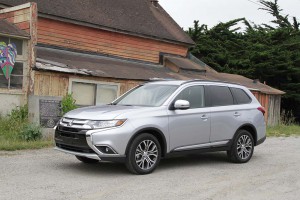After failing to find a new manufacturing partner, long-struggling Mitsubishi Motors reportedly will abandon its assembly plant in Normal, Illinois – a move that raises questions about the maker’s longer-term commitment to the U.S. market.
The Japanese maker is said to be making a strategic shift in focus to the Asian market, according to a report in Japan’s Nikkei news service. But the move comes as little surprise to those familiar with the Illinois operation. It has been operating for years at well under its production capacity, running up millions of dollars in annual losses.
“We have no statement at this time,” said Alex Fedorak, senior spokesman for Mitsubishi Motor Sales of America, or MMSA.
The mayor of the southern Illinois community, Chris Koo, said, meanwhile, that he has “heard nothing” from the automaker on any change in plan. Nor had Kyle Young, the vice president of United Auto Workers Union Local 2488, which represents the 918 workers at the factory.
The plant originally opened in 1988 under the name Diamond-Star Motors, a reference to the logos of Mitsubishi and what was then known as Chrysler Corp., the two having set the factory up as a joint venture. It was for many years the only unionized “transplant” assembly plant, the UAW continuing to represent workers after Chrysler pulled out of the alliance. (Volkswagen recently approved the union as a bargaining entity for workers at its factory in Chattanooga, Tennessee.)
(Click Here for a review of the 2016 Mitsubishi Outlander.)
It’s unclear if a decision to shutter the plant might be linked to the fact that Mitsubishi and the UAW are set to begin negotiating a new contract to replacement the agreement set to expire next month.
In June, MMSA EVP Don Swearingen acknowledged that the plant was losing money while operating well below capacity. He also said Mitsubishi was actively looking for a partner who might be willing to take over some of the unused capacity.
But company insiders, asking not to be identified by name, fretted that this wasn’t likely to happen, at least in part because those potential partners they’d met with did not want to have a union workforce. The reality that the plant hadn’t been significantly updated in years was another limiting factor.
(Click Here to check out the radical Mitsubishi GC-PHEV concept.)
At its peak, at the beginning of the new millennium, the Normal plant was turning out more than 200,000 vehicles annually. And Mitsubishi was one of the market’s fastest-growing brands. Then the bottom fell out.
The maker had tried to win over a new generation of buyers by offering hip new products packed by hefty financial incentives that, at one point, included so-called NINJA loans, short for No Income, No Job or Assets. By the thousands, buyers drove off with vehicles like the sporty Mitsubishi Eclipse, only to hand back the keys when they couldn’t handle the delayed payment plan.
That was one of the key factors that pushed Mitsubishi to the brink of default, the carmaker saved only by a last-minute rescue by Japanese banks. But the price was steep, a number of much-needed product programs put on hold while those backers were paid off.
Last year, the Normal plant produced just over 69,000 Mitsubishi Outlander SUVs, a number of them for export. But the maker has shown a surprising resilience this year, U.S. sales for the first half of 2015 jumping 24.9% to 49,544.
“Some of you in this room may have written us off. But we’re here to stay,” CEO Swearingen declared during a media drive of the 2016 Mitsubishi Outlander last month.
Now, many observers are questioning that position. “Rumors will surely fly about Mitsubishi pulling out of the U.S. market completely,” said Akshay Anand, an analyst with Kelley Blue Book. “What’s clear is that Mitsubishi needs to introduce stronger products in the right segments of the market if they hope to recapture some of the success they saw years ago.”
(Mitsubishi may be here to stay, but in what form? Click Here for the story.)


